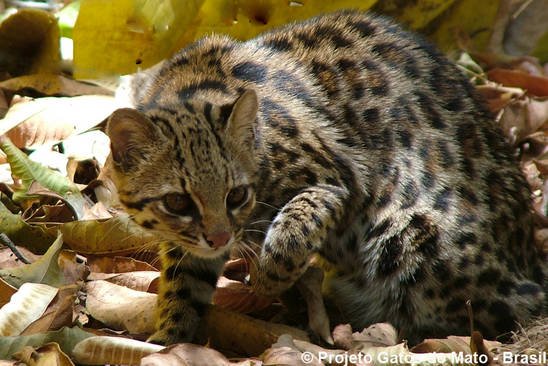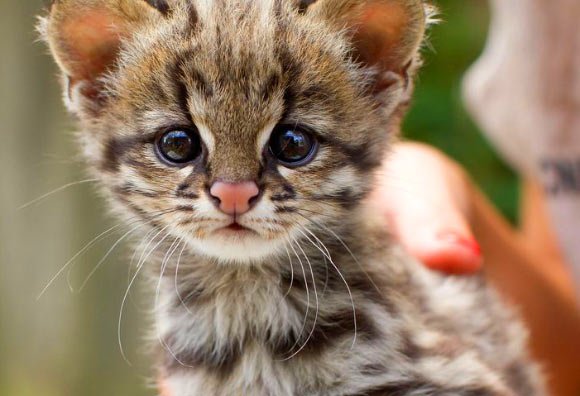
The Southern tiger cat, Leopardus guttulus, is a small, elusive wild cat found in the diverse landscapes of central to southern Brazil, eastern Paraguay, and northeastern Argentina. Recognized as a distinct species in 2013, it was previously considered a subspecies of the oncilla. This dainty feline is characterized by a yellowish-brown coat adorned with large, open rosettes, though melanistic (all-black) individuals are common. With a narrow head, large ears, and a relatively long tail, it can be confused with other small spotted cats of the Americas. Southern tiger cats are highly adaptable, inhabiting various environments from dense rainforests to open savannas and even disturbed agricultural areas, as long as natural cover is present. They are primarily nocturnal but can show diurnal activity, potentially as a strategy to avoid larger competitors like the ocelot, and are skilled climbers but spend most of their time hunting small mammals, birds, and reptiles on the ground.

Southern tiger cats play a vital role as mesopredators within their ecosystems, contributing to the regulation of small vertebrate populations. By preying on rodents, lizards, and birds, they help prevent overpopulation of these species, which could otherwise lead to imbalances in the food web and impact vegetation. Their ability to adapt to a range of habitats, including those impacted by human activity, highlights their resilience and ecological significance in maintaining biodiversity in these modified landscapes. However, with their “Vulnerable” conservation status and declining populations due to habitat loss, road kills, and disease from domestic animals, protecting the Southern tiger cat is crucial for the overall health and stability of the diverse South American ecosystems it calls home.
Every day, wild cats around the world face threats like habitat loss, poaching, and natural climate progression. But hope isn’t lost. With your support, we can protect these majestic animals and preserve their habitats.
Join our growing community of wildlife champions and help create a safer future for all 40 wild cat species.
Zoo-EV is a nonprofit organization dedicated to the protection and preservation of the world’s 40 wild cat species through education, community engagement, and conservation initiatives. Zoo-EV is recognized as a 501(c)(3) tax-exempt organization by the IRS, with the Employer Identification Number (EIN) 88-3636567.